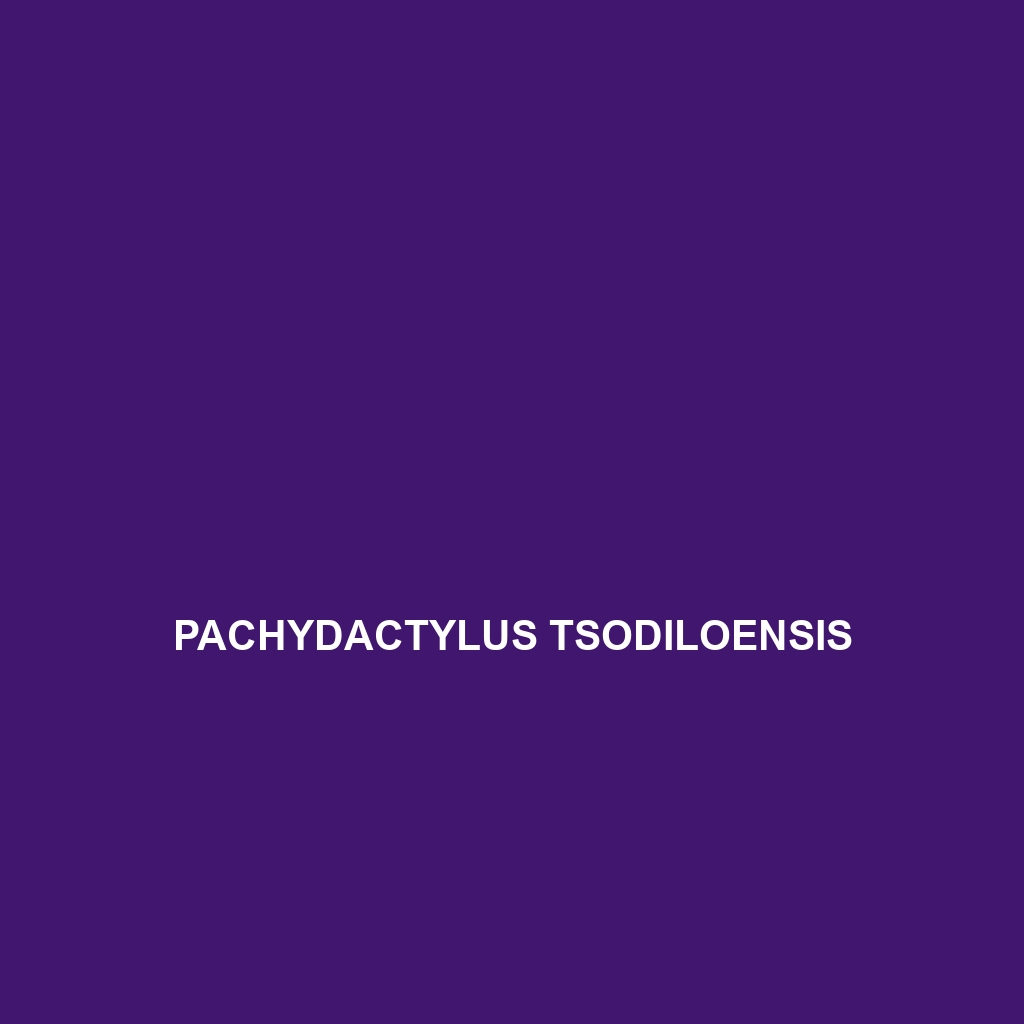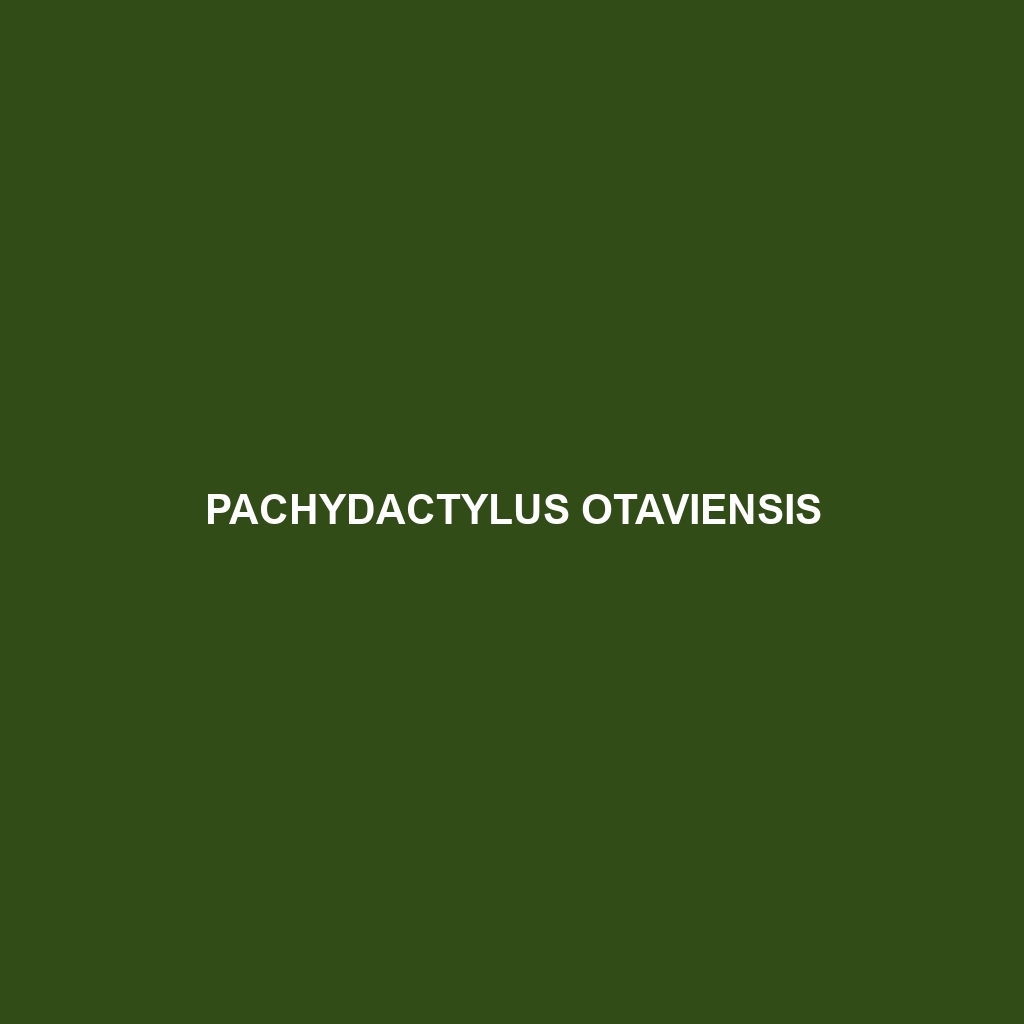Introducing the Pachydactylus weberi, known as Weber's thick-toed gecko, a robust, nocturnal reptile from the arid regions of southwestern Africa. With its striking coloration for camouflage and specialized climbing abilities, this insectivorous gecko plays a crucial role in maintaining ecological balance by regulating insect populations.
Tag: gecko behavior
Pachydactylus visseri
<b>Pachydactylus visseri</b>, known as the Namibian gecko, is a medium-sized insectivore found in arid regions of southern Africa, notable for its flattened body, large toes for sandy terrain, and remarkable camouflage abilities. This nocturnal species plays a crucial role in ecosystems by controlling insect populations and serves as an important indicator of environmental health.
Pachydactylus wahlbergii
<p><b>Pachydactylus wahlbergii</b>, commonly known as Wahlberg's spiny gecko, is a nocturnal insectivore native to the arid regions of southern Africa, known for its flattened body, spiny projections, and remarkable tail regeneration ability. This species thrives in savannas and semi-desert environments, playing a vital role in insect population control within its ecosystem.</p>
Pachydactylus vanzyli
<b>Pachydactylus vanzyli</b> is a remarkable gecko native to the semi-desert regions of Namibia and Botswana, known for its striking mottled coloration, large flattened toes for climbing, and nocturnal hunting habits. This insectivorous species plays a vital role in its ecosystem by controlling pest populations while being an important prey for larger predators.
Pachydactylus tsodiloensis
<p><b>Pachydactylus tsodiloensis</b> is a medium-sized gecko native to the arid regions of Botswana, particularly the Tsodilo Hills, known for its distinctive large toe pads and nocturnal behavior. This insectivorous species thrives in rocky outcrops and savannas, playing a crucial role in regulating insect populations and supporting the local ecosystem.</p>
Pachydactylus scutatus
<p>The <b>Pachydactylus scutatus</b>, or shield-toed gecko, thrives in the arid landscapes of southern Africa, displaying a unique camouflage with earthy brown and yellow patterns. This nocturnal insectivore measures 8 to 12 cm, featuring broad toes for climbing, excellent night vision, and a remarkable ability to regenerate its tail, playing a vital role in controlling insect populations within its ecosystem.</p>
Pachydactylus robertsi
<p><b>Pachydactylus robertsi</b>, or Roberts' Thick-toed Gecko, is a medium-sized, nocturnal gecko native to the arid regions of Namibia and South Africa, featuring a robust body, distinctive large flattened toes, and a diet primarily consisting of small invertebrates. This adaptable species exhibits a range of fascinating behaviors, including a unique defensive tactic of tail dropping, and plays a crucial ecological role as both predator and prey in its habitat.</p>
Pachydactylus rangei
Discover the resilient Pachydactylus rangei, or Namibian gecko, known for its unique adaptations to the arid environments of the Namib Desert. With a distinctive sandy brown coloration and broad, flattened toes, this primarily nocturnal insectivore plays a vital role in its ecosystem by controlling insect populations while serving as prey for larger predators.
Pachydactylus punctatus
<p><b>Pachydactylus punctatus</b>, also known as the spotted thick-toed gecko, is a robust, nocturnal reptile found in the arid regions of southern Africa, characterized by its sandy beige to light brown coloration with dark spots. These geckos are insectivorous, play a vital role in their ecosystem by controlling insect populations, and thrive in diverse habitats like savannas and scrublands.</p>
Pachydactylus otaviensis
<p><b>Pachydactylus otaviensis</b>, also known as the Otavi thick-toed gecko, is a nocturnal insectivore native to the arid regions of Namibia, distinguished by its stout body, thick toes, and remarkable camouflage that aids in its survival among rocky terrains. This species plays a vital role in controlling insect populations and maintaining ecological balance within its habitat.</p>








